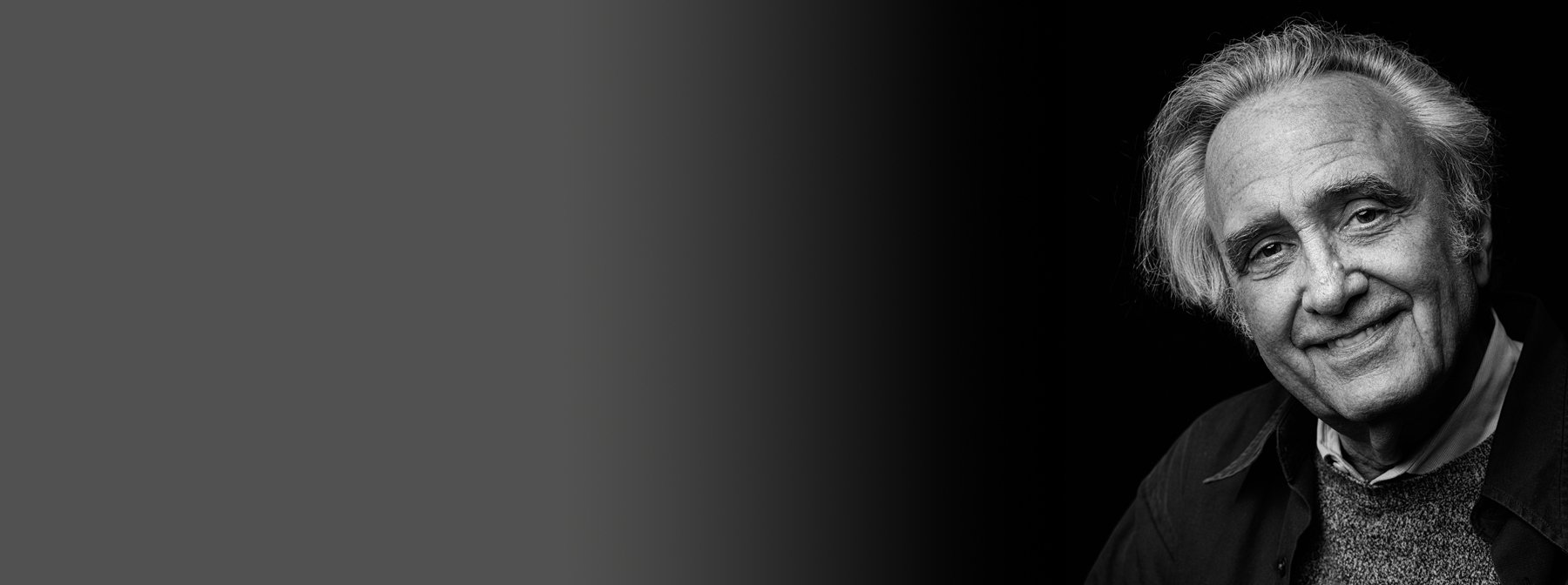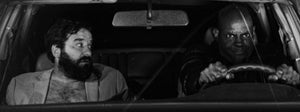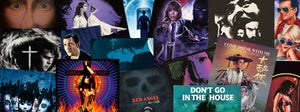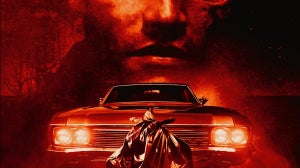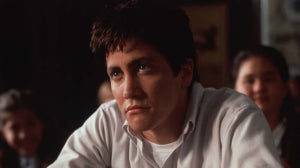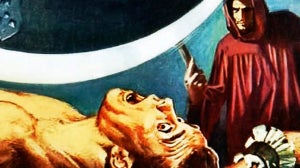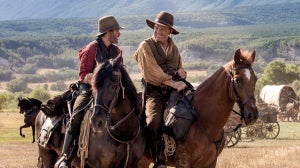
Not only an admired filmmaker, but as an original movie buff it is of no surprise when Joe Dante scribbles down recommendations even after the interview comes to an end as we discuss a current crop of directors who share a genuine love for cinema. “I’m all for film fans becoming directors. Worked out pretty well for Scorsese,” he quips. Of course, not only are they both encyclopaedic East Coasters but also Roger Corman alumni. Dante would go on to blend B-movie spectacle perfectly with the commercial flare one would expect from the big studios, bringing us some of the most entertaining and rewatchable movies of the ’80s. Now, he continues to educate us all; introducing (and curating) films by way of his own guests via the web series Trailers From Hell and podcast The Movies That Made Me with co-host and screenwriter Josh Olson.
We hope you had fun curating for ARROW.
This has to be the most varied collection of rather offbeat subjects that I think I’ve ever seen. There’s Severin, obviously this side of the pond — talk about obscurities — some of these box sets you boutiques put together are just astounding.
There is certainly a broad selection from ’80s schlock and the more obscure cinema to bona fide classics, all of which have been lovingly restored.
I have always been of the opinion that all movies should be saved, even porno movies. Anything that’s been made needs to be restored to some capacity because it’s part of our history. When home video first came in it was mainly the classics that were acknowledged; people wanted to just save those movies. But then, what was interesting, was that the film buff community started to become interested, “Maybe I can find this movie I’ve been looking for so long from a retailer…” And now, all of a sudden, we have a new box set of Mexican horror films that just came out; these pictures that would have only been run on American television over and over with poor dubbing… and now we can see the originals. I mean, if you wait long enough, are you going to get the rest of The Magnificent Ambersons? I don’t know, but it certainly is remarkable how there are a number of things that have come to light in my experience that I never thought we would have seen. The Other Side of the Wind is a good example. It seems if you wait long enough there are people out there who are willing to spend the effort to restore high-quality movies that we haven’t seen for 70-plus years.
The Other Side of the Wind was put out on Netflix and not even on physical media.
Yes. If it wasn’t for Netflix, it would never have been rescued.
In terms of both physical media and their own streaming services, how important do you feel the curation and the preservation of cinema is especially in light of streaming?
I think it’s more important than ever, particularly because of the idea of actually having something finite to put in a box and say, “OK, I can watch whatever I want and not be dependent on whether or not Netflix decides to cut it from their library or other streaming services.” They all rotate, they have a bunch of stuff for a while but then you won’t have access to it. The shelves behind you have all these movies on them that you can simply turn around and pluck off the shelf and put in your player and watch whatever you want.
We think of the boutique labels and the collectors market, but your film collecting days were completely different.
I come from a background of collecting 16-millimetre prints because that was the only way when I was younger. You couldn’t wait two more years for a picture to show up on television that was then often cut. So, you would just buy a print. That was frowned upon, of course, because that was considered film piracy and the studios were very hard even on people like Roddy McDowell whose films were given to him by Darryl F. Zanuck, “Agh, you’re not supposed to have that. Nobody should have these things!” And then, of course, home video came along and they went, “Oh, wait, we better get behind some of these collectors that have this stuff because we threw it all out.” And so because of the money factor and the fact that these things were now viable to capitalise on, they started pouring money into refurbishing their libraries and that’s why, currently, this is actually a golden age — believe it or not — in terms of accessibility to movies and the ability to find something and see it in decent quality. There’s never been anything like this in my lifetime.
https://www.youtube.com/watch?v=Cbzt6yqgKaU
That’s wonderful to hear. Having been amongst many Kings of cult cinema, how do you define this corner of the film industry?
Cult cinema varies and the meaning has changed over the years. Sometimes it was associated with midnight shows where people would just go and smoke marijuana. But then it was the idea, “Well, what about Ed Wood?” Everybody saw his films as kids on TV, but you didn’t connect them to a person, you just thought it was this odd movie, which no one saw in theatres, only on television. And then all of a sudden people started to realise that this guy’s movies may have been inept, but they were full of his personality and they actually had something to offer; he had an oeuvre that was genuinely worth experiencing and so that became a cult. Other unappreciated films followed, like Michael Powell’s Peeping Tom…
An incredible film — a cult classic, if ever there was one.
That was a very difficult picture to see for years. Again, it became a cult movie, partly because Scorsese got on board and said, “Hey, I know this guy, he’s a great director, this is a great movie… you ruined his career.” Then, of course, David Lynch is considered a cult director and even Peter Jackson for a while because of the movies he made early on in his career. I think the ‘cult’ is basically ‘movie loving’. That’s what is to me. That’s the cult… and we’re all in it.
Do you consider yourself a cult filmmaker or do you consider yourself a filmmaker?
You really don’t think about it when you’re doing it. You don’t think, “Who is this for?” I mean it’s for you. You do it for you. I wouldn’t make a movie that I wouldn’t go and see. I’ve been offered movies that were perfectly good projects, but I said, “I wouldn’t even go and see this movie… I’m certainly the wrong guy to make it.” So I think you really have to have a connection or else you’re just spinning your wheel.
We have to talk about one of the Kings of cult cinema, Dick Miller; the documentary That Guy Dick Miller on your list comes highly recommended. How did you become part of encouraging such a character?
Well, I was a fan of Dick’s before I met him having seen his Roger Corman movies. He was an actor I always enjoyed, so when I got a chance to make a movie I said, “I’ve got to have Dick Miller in it because I’m working for Roger Corman,” and often he worked for Roger, and we became friends. I just enjoyed watching him so much that I always tried to find something for Dick on other projects. He was the kind of actor who could play a large role or a small role and he would still be memorable. There were other ‘Kings’, I mean, Dick’s predecessor in that regard was a guy named Sid Melton who used to make pictures like The Lost Continent [1951]. He was always the Brooklyn guy and then I think he got a meaty role in Sidney J. Furie’s Hit! [1973], which was probably the best role he ever had. But he was, again, another kind of a ‘go-to guy’ who had a particular persona and when cast correctly was very good. Dick was the same way; you wouldn’t cast him as a Shakespearean scholar — because that’s not his thing — but he was a very versatile actor. I’ve seen him even in a mediocre movie like Cannonball [1976] — which I’m also in — and he gives a really good performance, I think the best performance in the movie, and there are a lot of famous people in that picture. He was just somebody I really liked and when I saw the documentary — which is as good a documentary about an actor as I’ve ever seen — when I saw it on the ARROW list, I thought, “Well I’ve got to mention that!” because it’s something people should see more of.
For sure… and it’s a piece of work that also connects everything about who you are as a filmmaker; your relationships within the film community; your tastes and eclecticism. With such a comprehensive view of cinema, how did this all begin for you?
I absorbed everything but that’s mainly because there was only TV, movies, radio and sports. Those were the only things kids could do [laughs] because there really wasn’t much else. So, I became a Saturday matinee addict and often I would get in trouble because I would stay and see the whole show twice and my parents would call the police, wondering where I was. It was like going to church for me; the whole act of going in and sitting down, the lights coming down and something coming on the screen that you’d never seen before was addictive. I was fascinated by film and when I knew cartooning obviously wasn’t going to work out for me, I had to go to college and so took a film course. This was the early sixties when there were 30 students and two cameras. Nothing of quality emerged from this, because everyone was fighting over the equipment. Nonetheless, we learned a bunch of stuff and when it turned out that I was probably more likely to become a film critic than a filmmaker — I wrote a lot of film criticism for trade magazines — I jumped at the chance with a friend of mine to work in California for Roger Corman. That’s where I learned how to cut on 16mm and I was put into the trailer department at New World Pictures and Allan Arkush and I became ‘the trailer people’. When you look at a movie and you have to cut down a scene, looking at it from several different angles, when it comes to actually being on a set you realise what you don’t need. So I think editing is a really good preparation for being a director.
It’s a fascinating trajectory you have in terms of your career from having aspirations to be a cartoonist then critiquing film, editing trailers and then becoming a film director.
Yeah, but the cartoon aspect of it apparently still resides in my films [laughs]. That’s because people have said that many of them look like Mad magazine parodies of themselves.
The scene with Chuck Jones at the bar with Billy in Gremlins always fascinated me as a kid and shows your love of cartoons and animators.
Oh, sure… I met Chuck at the Telluride film festival and we got along very well. He was sort of Mark Twain-like to me… and so with Gremlins, Billy wanted to be a cartoonist and so we figured, well, why not have Chuck in the bar and they can talk about cartoons. I’ve actually used Chuck in a couple of other pictures as well. Again, I was just a fan of his and then he became a fan of my work. He was a continuity for me between what started with me becoming fascinated with going to the movies and the movies I ended up making.
Another good luck charm…
Yeah. Dick Miller, Chuck Jones. They’re a crew to you; you just bring them along with you [laughs].
https://www.youtube.com/watch?v=YxuA7_8_RdE&pp=ygUaYmxvb2QgYW5kIGJsYWNrIGxhY2UgYXJyb3c%3D
We have to talk about The Big Combo. Hands down, one of the greatest film noirs ever made.
It’s one of my favourite film noirs. Joseph H. Lewis is, I think, a very underrated director. There’s Gun Crazy —
Terror in a Texas Town— another Arrow release.
Which is a pretty cool movie… and Boss of Hangtown Mesa [1942] is a great title of one of the other Westerns he did. The Big Combo, however, is a remarkable film noir. Richard Conti is fabulous. There is a scene where he directs Brian Donlevy by taking his earphones out; this incredible shot of machine guns going off with no sound.
He was one of those directors who seemed to make a B-movie look like an A-picture.
They used to call him ‘Wagon Wheel Joe’ because when he was doing Westerns, he loved to set up a camera to shoot through the Wagon Wheels [laughs]. Again, brilliant setups and that’s why The Big Combo is a favourite. It’s been elevated somewhat over the years by people who have discovered it, but it was sort of in the morass of those second-feature kind of movies that came out of the fifties that people saw then didn’t really remember. But it does have a following now and glad to have noticed that it was an Arrow release.
If there was one film from your Selects you would use as a gateway to cult cinema, which would you choose?
I’m a big Mario Bava fan, so without even looking at the list, I would say Blood and Black Lace. It is quintessential Bava. These are movies that are essentially parades of murders that are photographed in the most beautiful colours and garish tones that you could ever imagine… and then, of course, they all have different kinds of multiple murders within them. A gorgeous Technicolor picture that I think sets you up for Giallo movies in general while also being a very entertaining picture. Kind of a trip without the drugs.
From Kung fu movies to film noir check out JOE DANTE SELECTS on ARROW. Joe Dante’s The ‘Burbs and Matinee are both available on Blu-ray at Arrow Films, the latter also on Arrow Player.

